
 China Tours
China Tours Tibet Tours
Tibet Tours China Theme Tours
China Theme Tours Off The Beaten Track
Off The Beaten Track Yangtze Cruises
Yangtze Cruises China Trip Planner
China Trip Planner Travel Agents
Travel Agents


We had a wonderful time in Tibet. We have learned a lot about this unique destination because of the wonderful guide Degyi who is so knowledge and always available towards our tours. We stayed at the Shangri-La Hotel Lhasa, and we would never imagine a Tibet travel could be so nice and amazing without the help of Degyi.
Also, thanks a lot to our Tibetan driver Mr.Wongdun for his safe driving and a good sense of service along the way.
We shall return Tibet in the near future!
P.B. and A. A - Europe
Tibet Travel
June 2018 (Private Tibet Journey from Kathmandu)

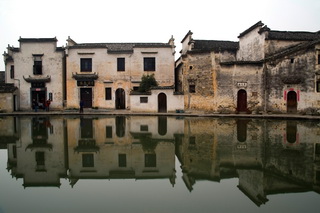 Located in Yixian County, Xidi and Hongcun Ancient Villages were listed as World Heritage Sites by UNESCO in 2000. These two villages are the most representative local-style residences in southern Anhui Province.
Located in Yixian County, Xidi and Hongcun Ancient Villages were listed as World Heritage Sites by UNESCO in 2000. These two villages are the most representative local-style residences in southern Anhui Province.The 1000-year-old Xidi village still keeps the ancient architectures of what they used to be hundreds of years ago. This village is 700m long and 300 meter wide, home to Family Hu since North Song Dynasty. Legend tells that the ancestor of the village was the famous Emperor Tai Zong of Tang Dynasty. The son of last emperor in Tang Dynasty changed his family name and hid here in order to escape the killing of throne usurper. 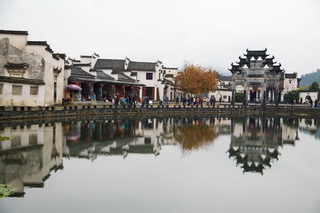
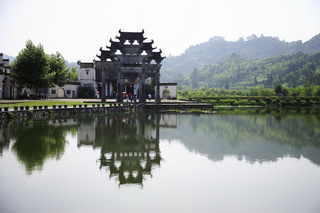
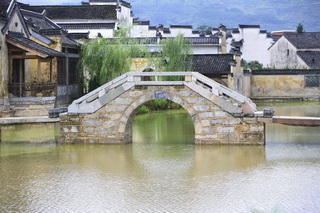
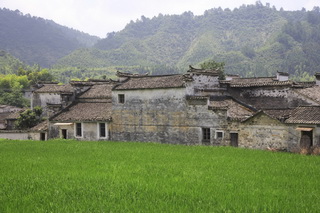
Xidi still has more than 300 ancient residential houses by now, and among which, 124 residential houses are very well preserved. With its elegant layout, delicate structure, beautiful decoration and deep culture content, the ancient buildings of Xidi fully demonstrates its rarity in ancient Chinese architecture and is regarded as an example of Chinese ancient residential buildings. When you walk into any of these houses, you can find elegant courtyards and gardens, refined doorframes made of black marbles, stone carvings of flowers, birds and beasts, brick carvings of pavilions and human figures as well as woodcarvings, colorful paintings and frescoes.
Lying about 10 kilometers (6 miles) northeast of Yixian County, Hongcun Village enjoys the reputation of 'a village in the beautiful Chinese picture' because of its location at high altitude and being shrouded by clouds and mist. It has about 137 Ming and Qing style residences.
Hongcun Village is built in the shape of an ox. The locals liken Leigang Hill as the 'head', two huge trees on the hill as the 'horns', the residences in the village as the 'body', a winding stream as the 'intestines', a crescent pond as the 'stomach' and the four bridges as the 'four feet'.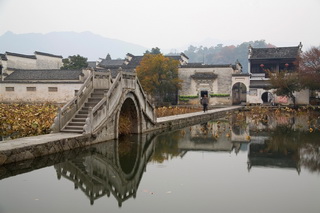
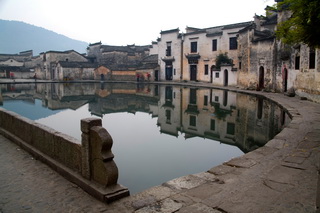
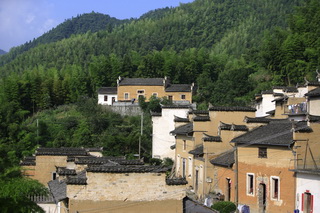
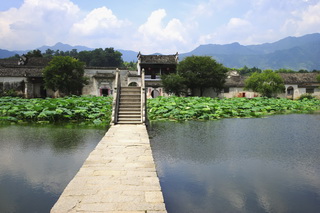
Built with pink walls and black tiles, all the residences are better arranged. Among them, the Chengzhi Hall is the most representative and is praised as the 'Folk Imperial Palace'. Numerous varieties of figures and patterns are carved on the columns, beams and door frames and are gilded with gold. It is said that about five kilograms (11 pounds) gold had been used in gilding the wood carvings during the construction of the house. The Chengzhi Hall is the best preserved. Hundreds of visitors from home and abroad are fascinated by its wood carvings.
China Trip Planner | Travel Agents | About Us | Why Us | Contact Us | How to Pay | How to Book - Terms & Conditions | Site Map
Copyright © 2010 - 2030 All Rights Reserved.


 0086-28-85711328
0086-28-85711328 0086-28-85546015
0086-28-85546015




